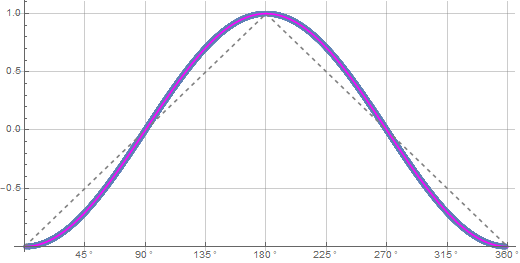Joy Christian wrote: ↑Thu Dec 02, 2021 3:04 pm
jreed wrote: ↑Thu Dec 02, 2021 2:19 pm
I have looked at your latest version, and here are my comments:
You did a great job of getting things to fit the cosine curve. The fitting worked really well.
There are now two detectors for each observer. They generate two records for each experiment for each observer.
The detection loophole is still there. This is easy to see by adding the line of code:
Total[nPP + nPN + nNP + nNN]
after the statistical analysis. This will display how many records were saved out of the total of twice the number of trials.
I get about 50%. The rest were discarded.
The discarded records were those where 0.001 was added to the derived sign value, giving 1.001 or -0.999.
When these go through the statistical analysis, the program drops them since 1.001 is not equal to 1, and -0.999 is not equal to -1.
There is only one detector in Fred's code, not two. And there is no detection loophole in the code --- no data is rejected. More importantly, there is near exact one-to-one correspondence between the initial states and the results detected by Alice and Bob. I ask Fred not to explain anything further in public until our paper is completed in presentable form. Until then, let anyone think what they wish about the code. We are not responsible for their mistakes.
Joy is playing word games. The code generates numbers in various files. Mathematica's vectors, matrices, lists etc. are files containing data. From the point of view of computer science all those generated numbers, including the ones which are discarded, are data. So there is data selection.
From the point of view of computer science there are no detectors. There are just functions generating and transforming data. There are no trials. No experimenters. There is data and there is data selection.
From the point of view of probability theory, this selection process generates data from a conditional probability distribution of measurement outcomes, given selection. Selection (leading to what Christian calls "initial states") depends on a criterion which is a function of settings and of the hidden variables determining the pre-initial states. Consequently, the measurement outcomes on both sides depend on the settings on both sides. Bell's theorem is violated because an important condition is violated: statistical independence of settings from hidden variables.
I doubt that Joy and Fred will get this published in a decent journal, but who knows, scientific publishing is not what it once was. Peer review is pretty meaningless.
On a side note, and talking of peer review, my RSOS "Comment" on Joy's RSOS paper just got finally accepted.




